Pulled pork is a delicious and versatile dish loved by many around the world. However, cooking it properly and reaching the right internal temperature for safe consumption is essential. The pulled pork internal temp is critical in ensuring the meat is tender, juicy, and safe. The proper internal temperature for pulled pork will give it the perfect texture and prevent harmful bacteria from developing. Knowing the correct temperature to cook your pulled pork, whether using a smoker, oven, or other cooking methods. This article will discuss the ideal removed pork internal temp and how to achieve it for your next barbecue or family gathering.
What Is Cut Of Meat Best For Pulled Pork?
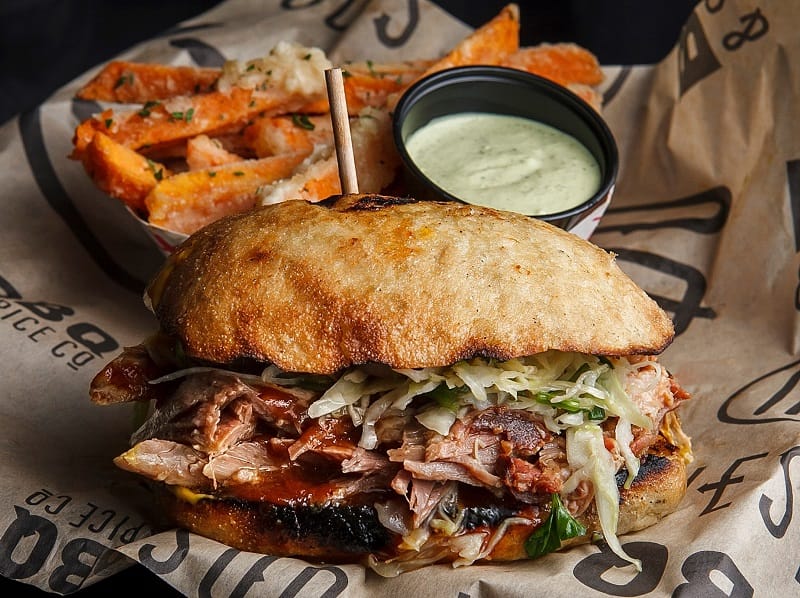
When making the perfect pulled pork, the cut of meat you choose is just as important as the cooking method. As a home cook who has experimented with various cuts of pork, I can confidently say that the pork shoulder is the best cut for pulled pork.
Now, you may be wondering why the pork shoulder is the best cut of meat for pulled pork. It all comes down to the meat’s fat content and connective tissue. The pork shoulder is a heavily marbled cut of meat with plenty of fat running throughout, which makes it perfect for slow cooking. Additionally, it has a lot of collagen-rich connective tissue, which breaks down during cooking, resulting in tender, juicy meat that easily falls apart.
When purchasing pork shoulder for pulled pork, you have a few options. The first is a bone-in pork shoulder, a Boston butt. This cut is ideal for slow cooking because the bone helps to retain moisture and flavor. The second option is a boneless pork shoulder, a picnic shoulder. This cut is leaner than the Boston butt, but it is still heavily marbled and loaded with flavor.
No matter which cut of pork shoulder you choose, it’s important to prepare it properly before cooking. I like trimming excess fat and removing the skin before seasoning the meat with a dry rub. Once the meat is seasoned, it can be slow-cooked in a smoker, oven, or cooker until fall-apart tender.
What Pulled Pork Internal Temp is Done
Knowing the right internal temperature to aim for is important when making pulled pork. While pork is safe to eat at 145 degrees Fahrenheit, that won’t be enough to achieve that classic “pull-apart” consistency that makes pulled pork irresistible. Instead, you’ll want to cook the pork shoulder to at least 190 degrees Fahrenheit, and some recommend going even higher to around 205 degrees Fahrenheit for the best results. The internal temperature can rise to 10 degrees Fahrenheit during the resting period, so it’s also important to keep that in mind.
As someone who loves cooking pulled pork, I’ve experimented with different cooking methods and temperatures to find the perfect result. Today I’ll share what pulled internal pork temp is done for both smoker and slow cooker methods.
Pulled Pork Internal Temp Smoker
- If you’re cooking pulled pork in a smoker, the ideal internal temperature to aim for is between 195-205°F (91-96°C). This temperature range allows for the collagen in the meat to break down, resulting in that melt-in-your-mouth texture that we all love. The pork should also have a nice pink smoke ring around the outside, which is a sign that it’s been cooked low and slow with the perfect amount of smoke.
- To achieve this temperature range, it’s best to cook the pork at a low temperature of around 225°F (107°C). Depending on the pork shoulder or butt size, this can take 8-16 hours. It’s important to monitor the temperature of the pork using a meat thermometer to ensure that it’s cooked all the way through and reached the ideal internal temperature.
Pulled Pork Internal Temp Slow Cooker
- If you’re cooking pulled pork in a slow cooker, the ideal internal temperature to aim for is the same as the smoker method, between 195-205°F (91-96°C). However, cooking pork in a slow cooker differs slightly from a smoker. Since slow cookers don’t allow the pork to develop a smoke ring, adding a bit of liquid smoke or smoked paprika to the seasoning rub is essential for a smoky flavor.
- To achieve the ideal internal temperature, it’s best to cook the pork on low heat for 8-10 hours. Again, using a meat thermometer to monitor the temperature is crucial to ensure it’s cooked all through and to the ideal temperature.
Whether cooking in a smoker or slow cooker, monitoring the temperature with a meat thermometer is essential to ensure it’s cooked all through and safe to eat. With patience and attention to detail, anyone can make delicious pulled pork with the perfect internal temperature.
Read more:
How Can You Ensure Your Pulled Pork Is Cooked All The Way Through?
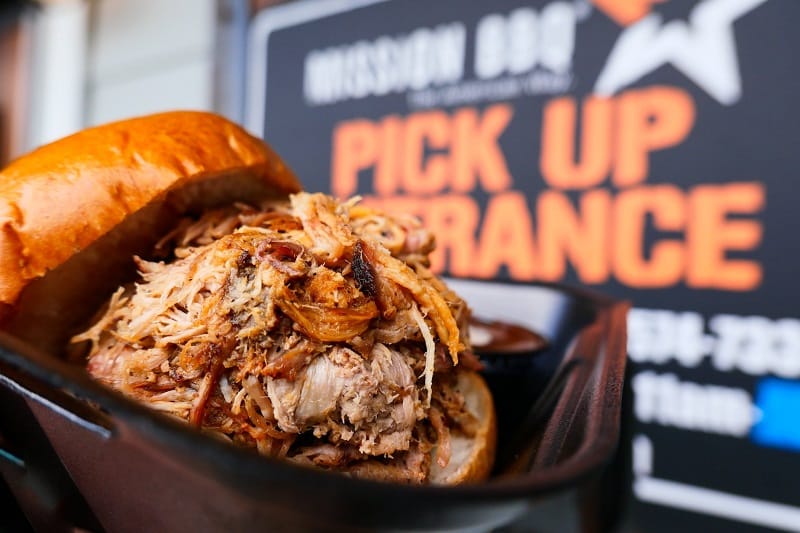
As a barbecue enthusiast, I know how important it is to get your pulled pork cooked all through. Nothing is worse than biting into a piece of undercooked meat or getting sick from it. So how can you ensure that your pulled pork is perfectly cooked? Here are a few tips:
- Use a meat thermometer: A good meat thermometer is one of the most important tools in your kitchen. When cooking pulled pork, you want the internal temperature to reach at least 195°F. This ensures that the meat is fully cooked and tender.
- Cook your pork low and slow: This means cooking it at a low temperature for a long period of time. This allows the meat to become tender and juicy. I recommend cooking pork at around 225°F for 1.5 to 2 hours per pound.
- Let it rest: Once your pulled pork is cooked, rest for 10-15 minutes before shredding it. This allows the juices to redistribute throughout the meat, making it even more flavorful and tender.
- Check for tenderness: If you can easily shred the meat with a fork, it’s likely fully cooked. If the meat is still tough and hard to shred, it needs more time in the smoker.
- Use a water pan: This helps regulate the temperature and moisten the meat. It also helps to prevent the meat from drying out while it cooks.
How Do Different Cooking Methods (Oven, Smoker, Grill) Affect The Internal Temperature Of Pulled Pork?
I am always curious about how different cooking methods can affect the taste and texture of my favorite dishes. Recently, I decided to experiment with cooking pulled pork using three different methods: oven, smoker, and grill. But my curiosity didn’t stop there – I also wanted to see how each method affected the internal temperature of the meat.
- First up, the oven. I preheated my oven to 325°F and placed a 4-pound pork shoulder in a roasting pan. I covered the pan with foil and let it cook for 4 hours. When I checked the internal temperature with a meat thermometer, it read 190°F. This is just above the minimum safe temperature for pork, which is 145°F, but not quite high enough to achieve the fall-apart texture that pulled pork is known for.
- Next, I moved on to the smoker. I used a combination of hickory and apple wood chips and maintained a temperature of 225°F for 8 hours. When I checked the internal temperature, it was 205°F – the perfect temperature for tender, juicy pulled pork. The slow and steady cooking process allowed the fat and connective tissue to break down, resulting in meat that practically melted in my mouth.
- Finally, I tried cooking the pork on the grill. I used indirect heat and a drip pan to catch any juices that might cause flare-ups. I cooked the pork for 6 hours at a temperature of around 275°F. When I checked the temperature, it was 195°F – still a bit shy of the target temperature, but certainly edible. The grill imparted a smoky flavor slightly different from the smoker’s but still delicious.
So, what did I learn from my experiment? Firstly, different cooking methods can greatly impact the internal temperature of pulled pork. Secondly, the smoker is ideal for achieving the perfect texture and flavor. And finally, while the oven and grill can produce tasty pulled pork, they require more attention to ensure the meat is cooked to the right temperature.
How Does The Size And Cut Of The Meat Affect The Internal Temperature Of Pulled Pork?
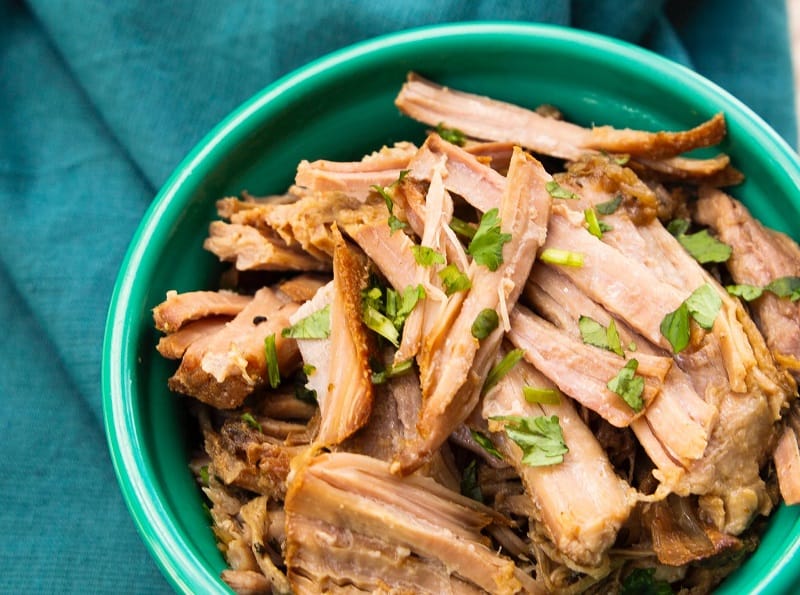
As a barbecue enthusiast, I’ve spent countless hours smoking and cooking different cuts of meat. I’ve learned along the way that the meat’s size and cut can significantly impact the internal temperature of pulled pork.
Let’s start with size. When it comes to smoking and cooking meat, size matters. A larger piece of meat will take longer to cook and therefore require a higher internal temperature to reach the desired level of doneness. This is especially true for pulled pork, which is typically a larger cut of meat. A smaller cut of pork will cook faster and require a lower internal temperature to reach perfection.
Now, let’s talk about the cut of the meat. Different cuts of pork will have different internal temperatures when fully cooked. For example, a pork loin will be fully cooked at an internal temperature of 145°F, while pork shoulder (commonly used for pulled pork) will be fully cooked at an internal temperature of 195°F.
This difference in internal temperature is due to the amount of connective tissue and fat in the meat. Cuts with more connective tissue and fat (such as pork shoulder) will require a higher internal temperature to break down and become fully tender.
So, how does all of this information affect the internal temperature of pulled pork? If you’re cooking a large pork shoulder cut, you must monitor the internal temperature closely to ensure it reaches the necessary 195°F for fully cooked and tender. On the other hand, if you’re cooking a smaller cut of pork (such as a pork tenderloin), you’ll want to check the internal temperature earlier and ensure that it doesn’t overcook and become dry.
Can You Still Achieve Succulent Pulled Pork If You Accidentally Cook It Too High Of A Temperature?
Yes, it is possible to achieve succulent pulled pork even if you accidentally cook it to too high of a temperature. However, it is important to know that if pork shoulder or pork butt is allowed to cook beyond 210 degrees, the meat will begin to dry out, affecting the texture and taste of the finished dish. To avoid overcooking, it is best to use a digital meat thermometer to monitor the internal temperature of the pork and remove it from heat once it reaches 145°F.
Suppose the pork shoulder has been cooked to a higher temperature and is dry and tough. In that case, it can still be saved by cooking it longer at a lower temperature or using the sous vide method, where the pork is slowly sealed in a vacuum bag in a water bath. By extending the cooking time, ensuring there is enough liquid, and checking the internal temperature of the pork regularly, one can still achieve succulent pulled pork even after accidentally cooking it to too high of a temperature.
What Are The Signs That Pulled Pork Is Cooked Thoroughly And Ready To Be Served?
To make sure that your pulled pork is cooked thoroughly and ready to be served, there are a few signs that you should look out for. Here are some of the most important ones:
- Internal temperature: The internal temperature of the meat should reach at least 195°F (90°C) to 205°F (96°C) for it to be fully cooked. Insert the thermometer in the thickest part of the meat to get an accurate reading.
- Bone looseness: If the bone easily comes off the meat, it’s a good sign that it’s cooked all through.
- Pull-apart tenderness: When your pulled pork is cooked thoroughly, the meat should be tender and easy to shred apart with a fork or tongs. It may not be fully cooked if you have trouble pulling the meat apart.
- Color and texture: Cooked pulled pork should have a pinkish-brown color and a slightly crispy outer layer. The meat should also be moist and juicy, not dry or tough.
- Smoke ring: A smoke ring is a pinkish-red discoloration that forms around the outer layer of the meat. It’s a sign that the meat has been cooked in a smoker or grill and indicates that the pork is fully cooked.
How To Make Pulled Pork?
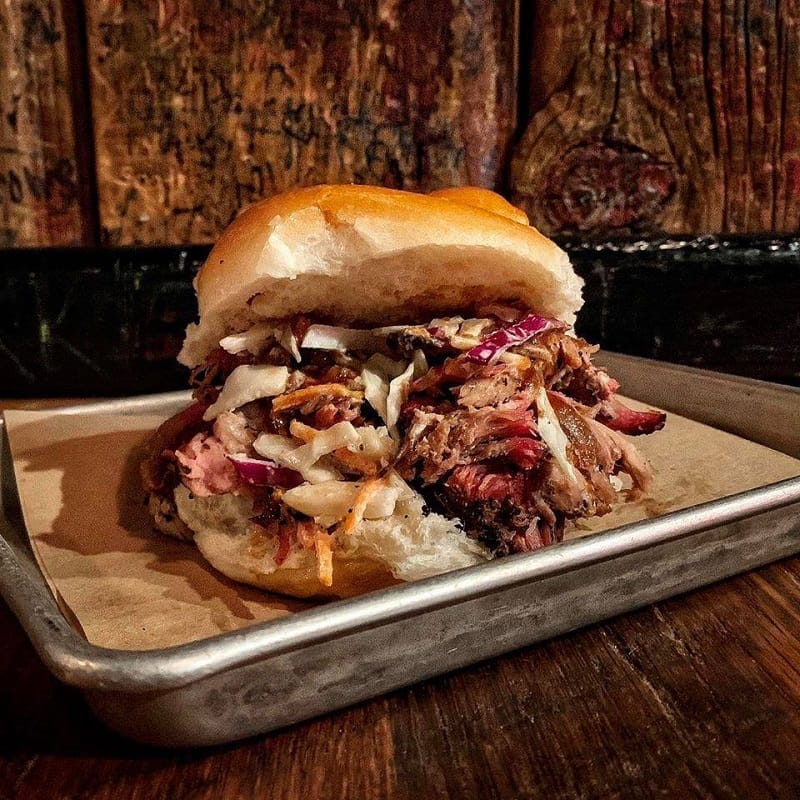
Pull pork is a great option whether you’re hosting a big BBQ or want to meal prep for the week. Here’s my step-by-step guide on how to make pulled pork.
- Step 1: Choose the Right Cut of Meat. Use a pork shoulder or pork butt for pulled pork. The cut is tougher and has more fat, making it perfect for slow cooking. Choose a piece of meat with the bone still in if you can. This will add more flavor to your final dish.
- Step 2: Season Your Meat. I like keeping it simple with salt, pepper, and garlic powder. Rub the mixture all over the meat to ensure it’s evenly coated. Let it sit for at least an hour before cooking to allow the flavors to penetrate the meat.
- Step 3: Cook Low and Slow. The key to tender pulled pork is cooking it low and slow. Preheat your oven to 250°F. Place your meat in a roasting pan, fat side up. Cover the pan tightly with foil and place it in the oven. Cook for at least 6 hours or until the internal temperature of the meat reaches 195°F.
- Step 4: Shred Your Meat. Once your meat is cooked, please remove it from the oven and let it cool for a few minutes. Use two forks to shred the meat, discarding large pieces of fat and bone. If you prefer a saucier pulled pork, you can mix it in your favorite BBQ sauce.
- Step 5: Serve and Enjoy! Your pulled pork is ready to serve! I like to serve it on a bun with coleslaw on top, but you can also use it in tacos and salads or eat it plain.
How To Shred Pulled Pork?
Shredding pulled pork is an essential skill for any barbecue enthusiast. After hours of smoking and slow cooking, you want your meat to be tender and juicy, with just the right smoky flavor. But how do you achieve those perfect shreds? I have spent countless hours perfecting my pulled pork technique, and now I have to share my tips and tricks for shredding pulled pork like a pro.
- Now, the tools you’ll need are simple. Two forks and a large cutting board or plate. That’s it. No fancy gadgets are necessary.
- Start by pulling off any large pieces of fat or unwanted bits from the pork. Then, using one fork to hold the meat in place, use the other fork to start shredding it apart. Make sure to use a back-and-forth motion, pulling the meat apart in opposite directions. This will ensure the meat is fully shredded and not just torn apart into chunks.
- Continue shredding the pork until you have your desired amount. If you’re working with a large amount of meat, you may need to do this in batches to avoid overwhelming yourself.
- If you’re struggling to get the meat shredded, it’s possible that it’s still too hot. Let it cool for a few more minutes, and try again.
- Once you’re done shredding, you can mix in any BBQ sauce or seasonings you desire. And there you have it, perfectly shredded pulled pork in no time.
Tips For Pulled Pork
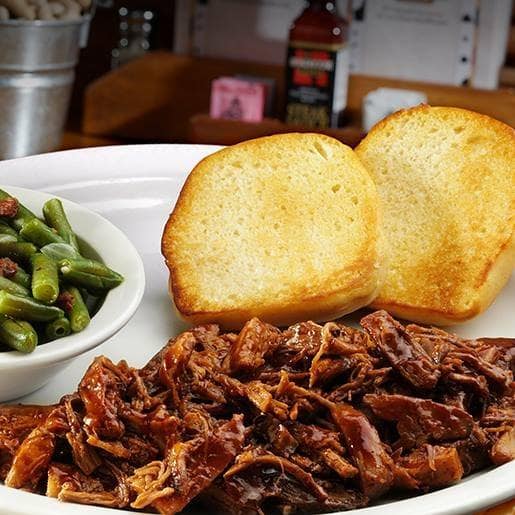
Pulled pork is a classic dish that is always a crowd-pleaser, but a few tips and tricks can take your pulled pork to the next level. Here are my top tips for making the perfect pulled pork:
- Start with a good cut of meat: The quality of your pork shoulder or butt will make a big difference in the final product. Look for a cut that has a good amount of marbling and fat, as this will help keep the meat moist during the long cooking process.
- Rub it down: An excellent dry rub adds flavor to your pulled pork. You can buy pre-made rubs, but I prefer to make my own using a combination of salt, pepper, paprika, garlic powder, and brown sugar. Rub the mixture all over the pork, making sure to get it into all the crevices.
- Let it rest: After applying the rub, let the pork sit in the refrigerator for at least a few hours, preferably overnight. This will allow the flavors to penetrate the meat.
- Low and slow: Pulled pork is a slow-cooked dish, and it’s important to simmer it. I recommend cooking it at 225-250 degrees Fahrenheit for 12-14 hours. This will ensure that the meat is tender and juicy.
- Use wood for flavor: If you’re using a smoker or grill, wood chips can add a lot of flavor to your pulled pork. I prefer hickory or apple wood, but you can experiment with different types to find your favorite.
- Wrap it up: After a few hours of cooking, wrap the pork in foil to help keep it moist. This will also help speed up the cooking process and ensure the meat is cooked evenly.
- Rest and shred: Once the pork is cooked, rest for at least 30 minutes before shredding it. This will allow the juices to redistribute throughout the meat and make it easier to shred.
- Serve it up: Pulled pork is a versatile dish that can be served in various ways. I like to do it on a bun with coleslaw and barbecue sauce, but you can also use it in tacos, quesadillas, or even on pizza.
At What Temperature Does Pork Butt Stall?
If you’re planning on smoking a pork butt, it’s essential to be aware of the temperature at which the stall usually occurs. The stall is a phenomenon that occurs when the temperature of the pork butt rises to around 160 degrees Fahrenheit and then stops rising for a period of time, usually a few hours. During this time, the meat may appear to be cooking very slowly or not at all.
While this can be frustrating for home chefs, it’s a natural part of the smoking process and is necessary for the pork butt to reach the desired internal temperature of 195-205 degrees Fahrenheit. You can ensure your pork butt is perfectly cooked and flavorful by remaining patient and waiting out the stall.
Mistakes To Avoid When Making Pulled Pork
People often make a few common mistakes when cooking this beloved dish. As someone who has made pulled pork many times, I wanted to share some tips on what to avoid when making this dish.
- Not giving the meat enough time to cook: Pulled pork is a slow-cooked dish that needs time to break down and become tender. If you rush the cooking process, you’ll end up with tough, chewy meat that is difficult to shred.
- Not seasoning the pork properly: Pulled pork gets a lot of flavor from the seasoning you use. If you don’t season the meat well, it will be bland and unappetizing. Make sure to use a good rub or marinade, and don’t be afraid to be generous with your seasoning.
- Not to overcook the pork: While giving the meat enough time to cook is important, you also don’t want to leave it in the slow cooker for too long. Overcooking the pork will make it dry and tough, which is not what you want in a pulled pork dish.
- Not allowing the meat to rest before shredding it: If you shred the pork immediately, you’ll end up with dry meat lacking flavor. Let the pork rest for 10-15 minutes before slicing it.
- Not to serve your pulled pork with the right accompaniments: Pulled pork is often served with coleslaw, BBQ sauce, and buns. Ensure these items are on hand to enjoy your pulled pork to the fullest.
How To Tell If Pulled Pork Is Bad?
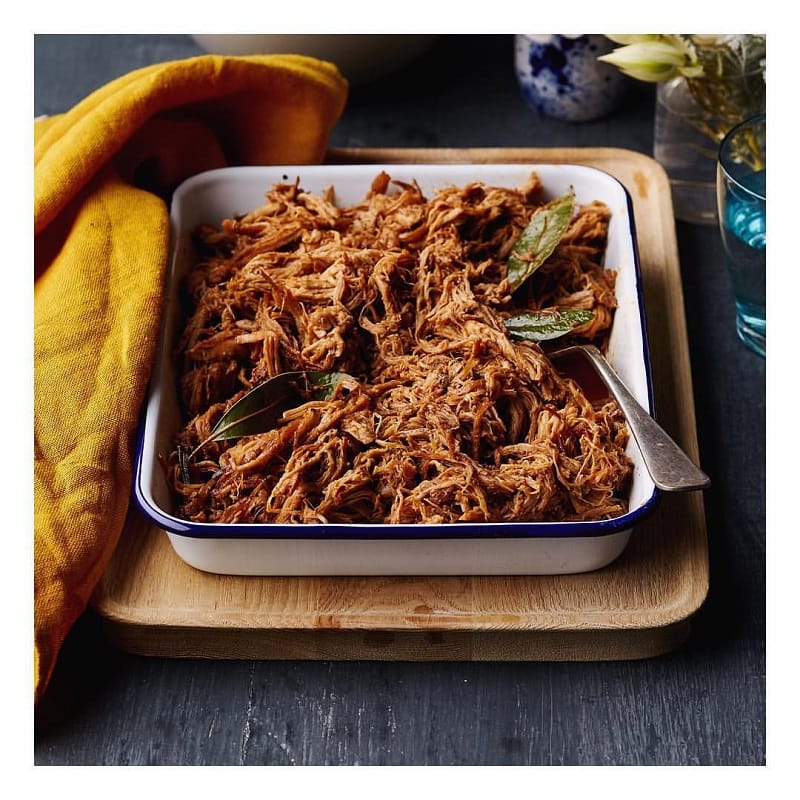
As someone who loves pulled pork, I know how disappointing it can be to realize that your leftovers have gone bad. But with a few simple tricks, you can easily tell if your pulled pork is safe. Here are some things to look out for:
- Smell: The smell is the first and most obvious sign that your pulled pork has gone bad. If it smells sour, rancid, or generally off, it’s time to toss it.
- Texture: If it feels slimy or sticky to the touch, then bacteria likely have started to grow on it. Additionally, if the pork is dry and tough, it may have been sitting in the fridge too long.
- Appearance: When it comes to pulled pork, appearance can also indicate whether or not it’s gone bad. If there are any signs of mold or discoloration, it’s best to play it safe and throw it out. Additionally, if the pork has a greenish tint, it’s time to say goodbye.
- Taste: If unsure if your pulled pork is safe to eat, take a small taste. If it tastes off or has an unusual flavor, it’s best to err on caution and discard it.
Pulled Pork Internal Temp – FAQs
Is It Safe To Eat Pork At An Internal Temperature Of 145°F?
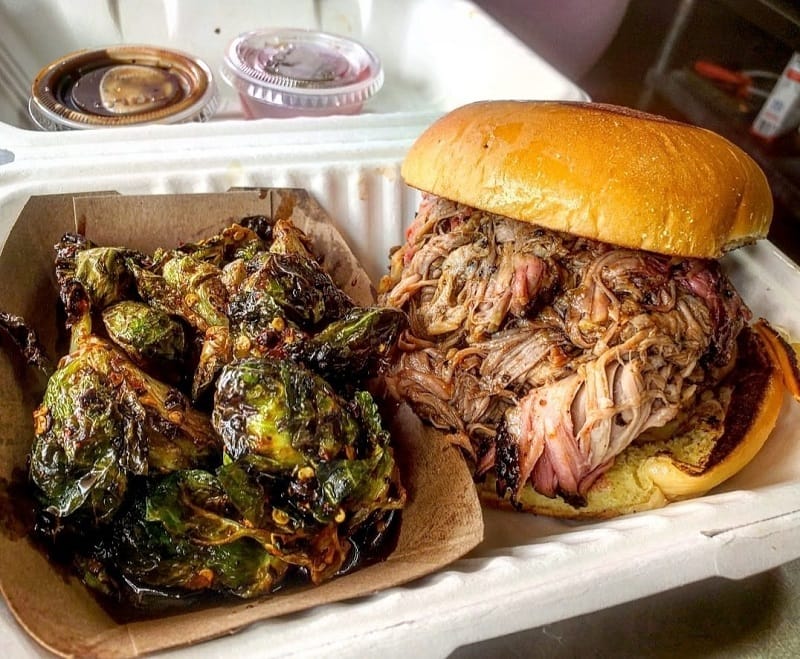
The answer is an unequivocal yes! Cooking pork cuts to 145°F with a three-minute rest time is just as safe as cooking them to 160°F, previously considered the recommended temperature. However, ground pork should always be cooked to 160°F for optimal safety. Pre-cooked ham can be reheated to 140°F or eaten cold, while fresh ham must be cooked.
It’s important to note that high-connective-tissue cuts, which have enough fat and collagen to break down during cooking, should be cooked longer. Pork is considered safe to eat when it reaches an internal temperature of 145°F, and bacteria that cause foodborne illness cannot survive. So rest assured, you can enjoy your pork cooked to the recommended temperature of 145°F without any worries!
The Benefit Of Low And Slow Cooking
Low and slow cooking is a cooking method that has been used for centuries, and it’s still around today for one simple reason – it’s fantastic. One of the main benefits of cooking this way is that meat becomes juicy, flavorful, and tender. This happens because low-heat cooking, whether smoking, steaming, poaching, or sous vide, helps transform tough cuts of meat into delicious, fall-off-the-bone dishes.
Not only that, but low-heat cooking also reduces the chances of scorching foods, and as a result, the need for added seasoning or sauces is decreased. Using a slow cooker in low and slow cooking also helps tenderize less expensive cuts of meat, bringing out a richer flavor. Best of all, it’s incredibly convenient. A cook can leave a dish to cook for 8 hours or even overnight without any intervention, allowing them to attend to other things.
How Long Should You Let Pulled Pork Rest After Cooking To Allow The Internal Temperature To Stabilize?
When it comes to pulled pork, it’s important to let it rest after cooking to allow the internal temperature to stabilize. The recommended minimum time for resting a pork butt is 15 minutes, but for the best results, it’s best to rest it for 1-2 hours. The internal temperature of the pork butt should reach at least 205°F before it’s considered done, and it’s crucial to cook it to temperature, not time.
Unlike other pork cuts, pork shoulder must rest for at least 30 minutes before it can be pulled apart. Once the pork has reached the desired temperature, it can be placed in a dry cooler for the best results. Letting the meat rest for 45 minutes to an hour in the cooler will ensure it’s cool enough to handle. Following these guidelines, anyone can achieve perfectly cooked and rested pulled pork.
Conclusion
In conclusion, getting the pulled pork internal temp is crucial for perfect texture and flavor. Aim for a temperature range of 195-205°F (90-96°C), use a meat thermometer to check the internal temperature, and adjust your cooking time and temperature as needed. With some practice and patience, you can create mouth-watering pulled pork that will have your friends and family begging for seconds.
References:
- https://food52.com/hotline/27771-pork-accidentally-cooked-at-high-temp-salvageable
- https://www.thespruceeats.com/the-benefits-of-slow-cooker-cooking-3061063
- https://www.quora.com/Is-it-safe-to-eat-pulled-pork-after-sitting-at-room-temperature-for-8-hours

Hey readers! Chip Holland here, and I’m a Manager of this website. My passion for writing about it only matches my passion for BBQ. Follow my blog for mouth-watering recipes, tips, and tricks for the perfect smoke, grill, and BBQ. I’m sure you won’t be disappointed!
